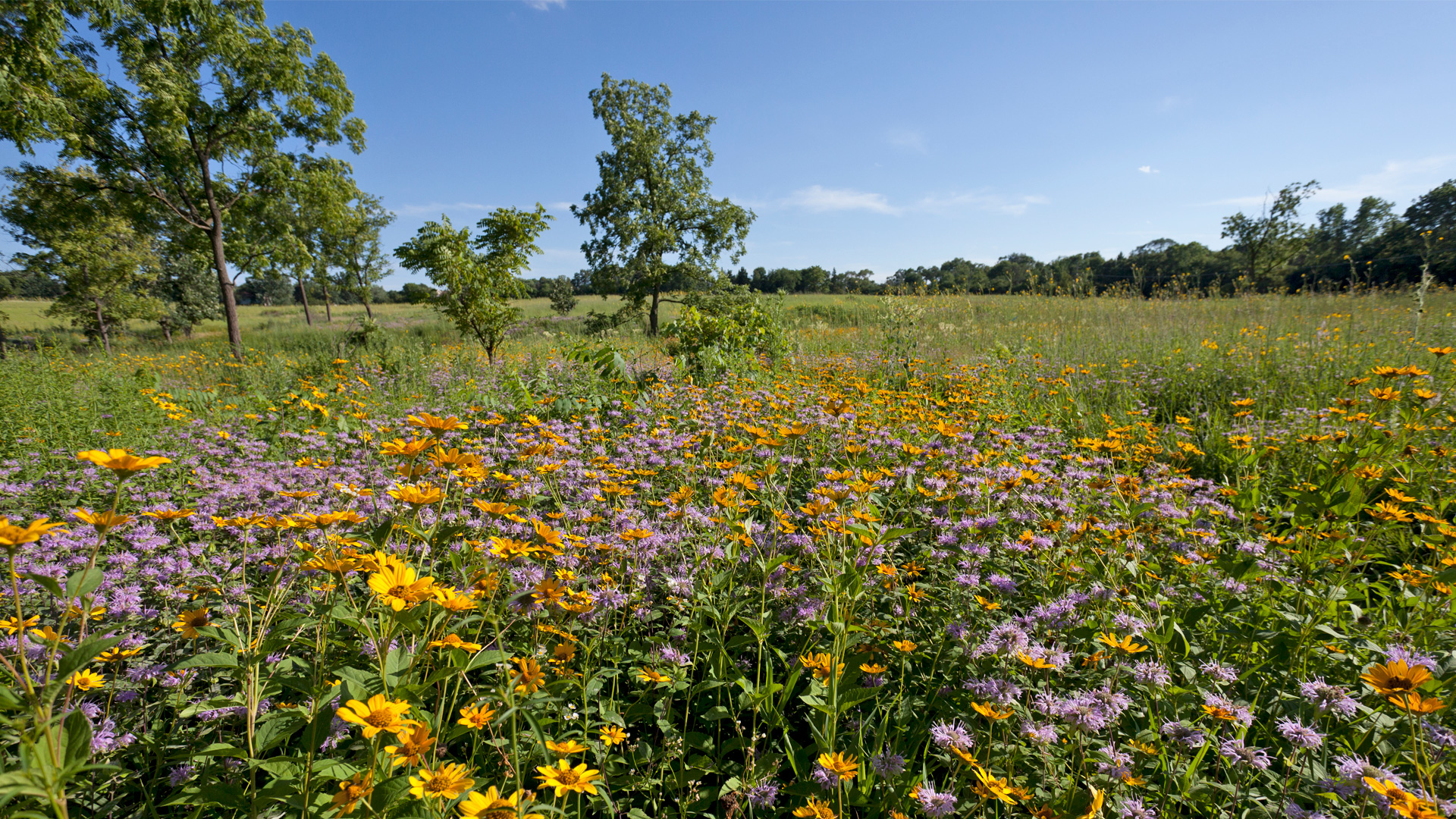The Morton Arboretum Celebrates the 60th Anniversary of the Schulenberg Prairie
The year 2022 marks not only The Morton Arboretum’s centennial celebration but also the 60th anniversary of the Schulenberg Prairie, located on the Arboretum’s West Side. The Schulenberg Prairie and savanna is one of the nation’s oldest tallgrass prairie restorations, dating back to 1962 when former Arboretum director Clarence Godshalk developed plans for a “native planting” on farmland that had been acquired in the late 1950s on the Arboretum’s western edge. Godshalk appointed assistant propagator Ray Schulenberg for the task, changing his title to curator of native plants.
In the fall of 1962, Schulenberg and his team collected seeds and broke ground to prepare for planting in the spring of 1963. For the first year, and annually until 1972, two planting methods were used: greenhouse propagation and broadcast sowing.
In greenhouse propagation, seeds were planted in flats in April. After the seedlings were developed, they were individually transplanted into a 2×2-inch wood veneer band. By late May, once the frost danger had passed, the seedlings were planted in the prairie-to-be.
In broadcast sowing, seeds would be mixed with sand and often vermiculite before being scattered directly onto the prepared area. The planted area would then be raked and the seed pressed into the ground with a roller.
Schulenberg worked with staff and volunteers to help manage the prairie. During his final year managing the project in 1979, Schulenberg trained Pat Armstrong, Helen Pierce, and Barbara Rutherford to look after the prairie. Armstrong recruited an active corps of volunteers, known as The Morton Arboretum Prairie Volunteers, to help maintain the prairie, plant new species, and monitor study plots.
Upon Schulenberg’s retirement in 1987, the prairie was named in his honor. Today the prairie spans about 100 acres, containing several reconstructed habitats including savannas, tallgrass prairie, and a wet prairie along Willoway Brook. Staff and volunteers manage the prairie through the removal of nonnative plants and prescribed burns. The Schulenberg Prairie is a benchmark in ecological restoration and is studied by scientists to understand how it compares to a natural prairie and to improve restoration practices.
